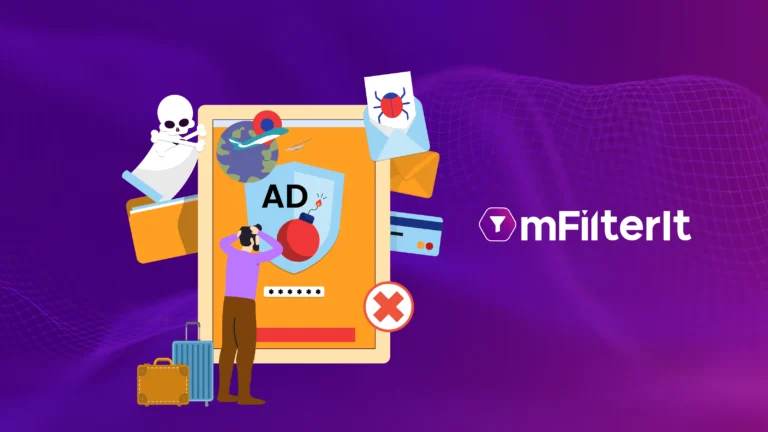Retargeting is a form of behavioral targeting as it targets people who have already visited a website. It allows you to target the users with relevant ads when they visit other websites. The most successful retargeting creative includes a clear call-to-action and a particular offer that entices users to make a purchase. After a visitor leaves your website without making a purchase, retargeting reminds them about your products and services. Apps, search, and website banner ads all function with retargeting.
Retargeting is vital for connecting with customers and growing revenue for today’s serious marketers. Retargeting works by employing “cookies,” which are little pieces of data saved by the browser that track who has seen your ad or visited your website. Marketing teams can then utilize the cookie data to retarget the users with the relevant ads. This is to target the users who have expressed an interest in a specific product or service and, in a way, help you increase the conversions and help in brand promotion/awareness.
Retargeting helps you increase online sales by keeping your brand in front of customers’ eyes and attracting “window shoppers” when they’re ready to buy. Your brand gets momentum and reputation every time a customer views your retargeting advertising. The importance of solid branding and recurrent exposure is underlined by the high click-through rates and conversions of retargeting campaigns.
Major Impact of Retargeting Fraud
Advertisers and marketers are plagued with ad fraud. Retargeting is re-engaging the users who have shown a strong desire to take a down-funnel action. The fraudulent activity is unaffected by the user’s level of engagement, whether it’s through simulated clicks or installs. Imagine if the ads are being served to bots instead of actual users and there is no call-to-action; it has implications as it increases the advertising cost and delivers poor results.
The fraudsters sabotage good quality traffic by generating invalid traffic, impacting the marketing budgets. Bots/invalid traffic, in a way, affects the Advertiser’s marketing strategy as it skews the analytics and other metrics that help them make better business decisions.
Almost 30-40% of the Advertiser marketing budgets are exhausted due to these bots (non-humans) or invalid bot traffic that never get converted. Advertisers must remove these malicious bots from the retargeting system to improve the ROI. The marketers need to safeguard themselves and ensure that their efforts are spent only on retargeting genuine human prospects rather than harmful bots.
Overall, it leads to a loss of advertising revenue, reduced ROIs, and increased lead generation/referral payouts. Furthermore, unprotected retargeting campaigns produce phony high-performance results, inflate keyword bids, deflate ad visibility, and reduce the effectiveness of search ads.
● Keyword Bid Inflation
Retargeting campaigns target prospects for boosting sales /conversions. The campaign consists of users captured through cookies, dynamic, or list-based methods. Moreover, it comprises keywords for increasing the ROI by reaching people not enlisted in the campaign but interested in the product/service. However, bidding similar keywords on digital ads can inflate the bid price.
Fraudsters infiltrate the retargeting campaigns of brands by becoming prospects. They use bots to add products into the cart and eventually abandon them and leave the website. Advertisers add these bots, displaying human-like behavior to the remarketing list. Moreover, fraudsters even use bots to click brands’ ads and boost impressions, clicks, and visits. So, advertisers think that their retargeting campaigns are delivering high performance.
On the other hand, fraudsters use these deliverables to acquire financial gain from advertisers. The high performance of the campaigns also inflates the cost of keywords and diminishes the brand’s advertising budget faster than usual. Advertisers fall for the bots because they are sophisticated bots/undetectable. So, the analytics show the desired results, and advertisers boost their advertising budget. Eventually, the cost of retargeting fraud causes a loss of millions to advertisers and diminishes the retargeting efforts.
● Diminished Visibility
Our study reveals that marketers and advertisers use 20-45% of the ad spending on retargeting campaigns. They engage in such activity expecting a higher than 25% return from a usual ad. Unfortunately, the penetration of fraudsters using bots into the remarketing lists displays them as prospects. So, the potential ROI from a retargeting campaign is never achieved by advertisers/marketers.
Fraudsters habitually follow the money, and retargeting campaigns seem like a honey pot. Therefore, they continuously engage in ad-stacking, pixel stuffing, cooking stuffing, and other ad frauds to obtain financial gain from retargeting ads. Moreover, retargeting fraud increases the cost of impressions/views on ads.
Brands build recall value or obtain mind space through retargeting campaigns. Higher visibility can also increase conversions. Unfortunately, retargeting fraud diminishes visibility and distorts the potential results. Eventually, the effectiveness of retargeting ads is hampered.
● Distorted Search Ad Results
Another dramatic side effect of fraud on retargeting campaigns is that it distorts paid search ads. A tracking code is installed on a brand’s website to display custom ads to users on a partner site. The display/video ads are based on the products searched by the user on the brand’s website. The remarketing list consists of commonly searched keywords on search engines like Google, Bing, Yahoo, etc., and the brand’s web pages.
Marketers and advertisers believe that setting up a remarketing/retargeting campaign eliminates ad fraud, including prospect users. But fraudsters cannibalize the remarketing list by using sophisticated bots to infiltrate it. So, ad fraud is eliminated through such campaigns is a myth, and only an ad fraud elimination solution can detect & eliminate fraud.
Advertisers use sources like Google Ads tag, Google Analytics (GA), App Analytics, Ads Data Hub, etc., available on Google for creating data tags to upload on the website. In addition, they commonly generate prospect user lists by using metatags on the first page of the website. Optionally, they can even detect prospects through the added data tags in the Google Site Kit extension of site builders like Wix, WordPress, and Squarespace.
Takeaway
Most marketers and advertisers spend a significant amount of their advertising budget on remarketing initiatives. Customer Data Management systems and remarketing lists are infiltrated by invalid traffic (IVT). Fraudsters employ clever bots that mimic human behavior. Bots act perfectly, but people do not, and interpreting / reading the data requires knowledge.
While remarketing campaigns appear to be the most logical choice, previously engaged users are fantastic fraud targets. Advertisers who use retargeting are at risk of being victimized by fraudulent hijacking techniques. This risk should be factored into every intelligent marketer’s marketing approach. Advertisers can confidently proceed with their remarketing campaigns with an ad fraud detection solution since the second layer of defense against such actions has been established.



